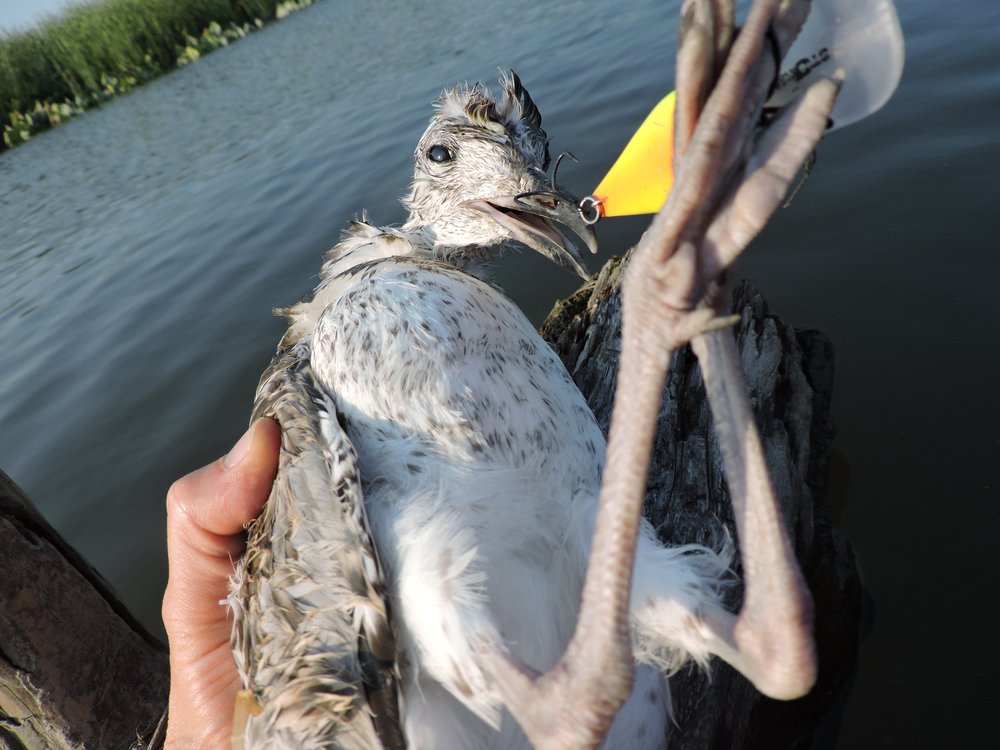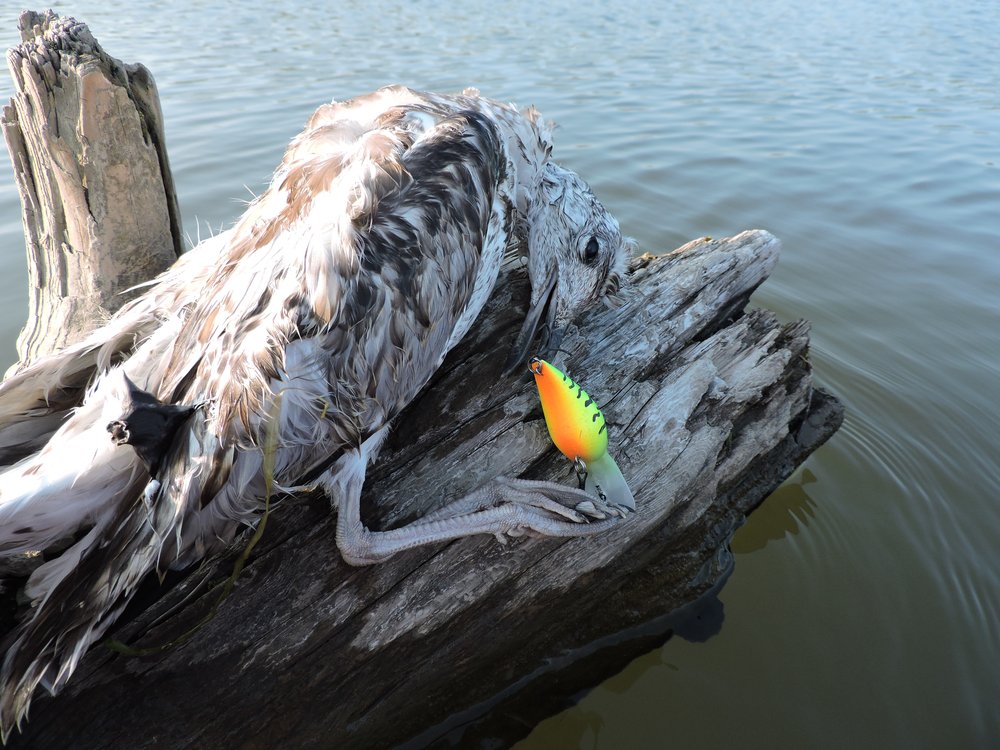
The river was windy last night. Both current and wind were against me as I shoved south in my kayak on the Hudson River. To the side, I saw a lump in the water. I assumed it was a fish, and was hesitant to pull near—marinating fish is not a smell I enjoy. But the shape was not entirely fish-like, so curiosity won out. What I found floating in the water was a gull, its bill hooked through the slit-like nares, by a fishing lure, and the web of its feet hooked by the other end of the lure. It was clear what had happened: the bird had come down to the shiny object expecting a fish meal, was caught through its bill and, in trying to liberate itself with is feet, entangled itself further. The lure hooked the bird to itself, bill and feet joined to shape the bird into a circle. It then plunged into the water and drowned. Not too long ago. The body was soft in my hands, and the feathers intact.

As I held the bird, I said out loud: I hate people. I don’t actually. But I hate the carelessness of people, how someone had let this lure go. I transported the bird to a place where I could liberate it from the lure, then I unceremoniously dumped it in the water—a meal for a snapping turtle, perhaps. I watched the limp bird float off and let the mixture of sadness and outrage play through me.
This hook was just one of the ways that we make life for birds an obstacle course. Four of the top killers are these:
Glass. The Toronto-based organization FLAP—Fatal Light Awareness Program—estimates that every year 100 million to 1 billion birds are killed colliding with windows.
Wind turbines. Wind farms kill about 572,000 birds a year.
Cats. A 2013 study estimates that cats, both domestic and feral, kill 1.4 to 3.7 billion birds a year.
Planes. “Avian ingestion” or BASH—Bird Aircraft Strike Hazard—forces one plane a day to land; the cost to the industry is in the millions. But the cost to the birds? It’s hard not to fall into a feathered hopelessness.

When a bird is killed by a window strike, a feral cat, a wind turbine or an airplane it is absurd. Their natural lives—finding a meal, and staying safe from natural predators—are challenging enough. And perhaps the greatest challenge for a bird is migration. Many end up with tattered wings, and bodies that weigh half as much as when the bird started out.
The ludicrousness of a bird dying by colliding with a window, or electrocuted on a wire, or snagged on a fishing lure is hard to describe. But since I have been reading pages of Arctic and Antarctic literature this summer, this is the analogy I can make. Let’s take the Norwegian polar explorer Roald Amundsen who was the first man to sledge his way to the South Pole, most likely the first to fly over the North Pole (in a dirigible), the first through the Northwest Passage, and the second through the Northeast Passage. He is the Arctic Tern of polar explorers. Now, imagine that he has just returned from the South Pole and he stops at the local grocery store to buy some food—perhaps the lettuce he missed after three years of polar mush. And as he walks back to his car, he is crushed and killed by a car backing out of the parking lot. It is that absurd for this bird to have been killed by a fishing line.